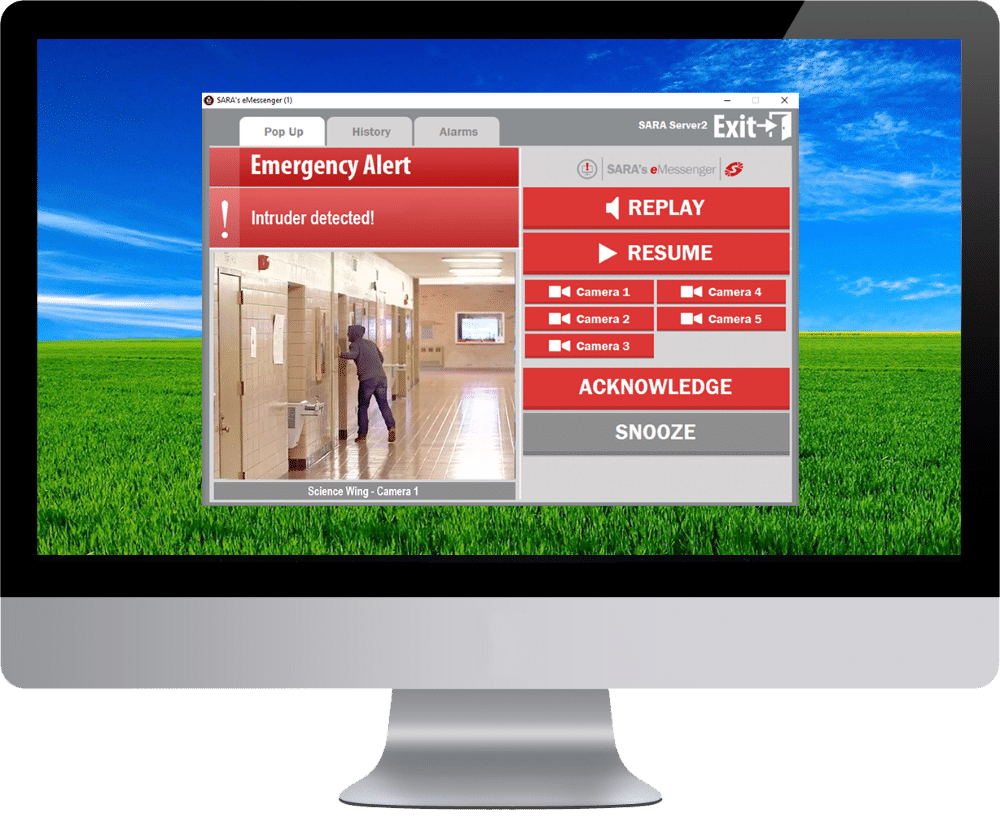By Laura Hartman
In the rapidly evolving landscape of religious institutions safety, ensuring the safety and security of the congregation and staff remains a paramount concern.
Disruption to the solemnity of the church comes in all shapes and sizes, ranging from potential threats and emergencies, such as natural disasters and security breaches, to everyday events, such as a sick parishioner or a pipe leak.
In such moments, whether they are life-safety or simply janitorial, the effectiveness of communication and information dissemination becomes a linchpin in minimizing chaos, safeguarding lives, and keeping the sacredness of the sanctuary a priority.
Enter situational awareness experts. To manage all notifications from the mundane to the critical, religious institutions need a pioneer in crafting bespoke middleware technologies that serve as the backbone for smart notifications within a church setting.
Situational awareness companies are using their innovations to revolutionize how all institutions from manufacturing to hospitals, educational, retail, and even religious manage emergencies. They enable them to disseminate crucial information swiftly and intelligently to appropriate recipients.
The Power of Middleware and Smart Notifications
Not all notifications are created equal. It is pertinent that the notification system being used delivers smart notifications, meaning all disparate systems have been integrated through middleware technology.
Smart notifications come with a payload of information. It’s far more than an alarm sounding that something is wrong, though no one is quite sure just what or where.
Your situational awareness partner should be able to deliver notifications that are full of information, saying what is wrong, where, and even how the alarm was triggered.
True middleware can even integrate with cameras to send smart notifications, giving real-time eyes on any situation. This type of middleware platform empowers religious institutions and how they address emergencies.
Using middleware, smart notifications deliver important details to targeted specific recipients, ensuring that the right information reaches the right people at the right time.
Imagine a scenario where a church faces an imminent weather threat. Smart notifications swoop into action, delivering concise yet comprehensive alerts not just to all stakeholders but also tailoring messages to specific groups based on the church administrations’ recommendations, ensuring that those in the affected area receive prioritized information.
This level of targeted communication is a game-changer, potentially saving crucial minutes in emergency response time.
The Anatomy of Smart Notifications
Understanding the diverse array of notifications that can fortify church safety is crucial. They range from routine announcements to critical emergency alerts.
Routine notifications encompass everyday communications such as scheduling changes, reminders, or general updates.
While these might seem mundane, they contribute to establishing a seamless flow of information within the church community, which is always juggling multiple variables.
On the other end of the spectrum lie critical alerts—these are the keystones of church safety. Whether it’s a lockdown due to security threats, severe weather warnings, or health emergencies, these notifications demand immediate attention and action.
Crafting these alerts with precision is pivotal. They must be clear, concise, and action-oriented, ensuring that recipients comprehend the gravity of the situation and know precisely what steps to take.
Custom Middleware: The Backbone of Safety
Situational awareness companies thrive on customization. They understand that each religious institution is unique, with its own set of needs and nuances.
Hence, they craft custom solutions that seamlessly integrate with existing systems, augmenting them to become robust safety frameworks.
These solutions amalgamate various communication channels—be it SMS, emails, mobile apps, quick messaging, and even public address systems —into a unified platform.
Through this integration and life-saving redundancy, churches can reach individuals across multiple mediums simultaneously, maximizing the likelihood of crucial information reaching the intended recipients swiftly.
Targeted Distribution: Precision Matters
One of the defining features of smart notifications is their targeted distribution.
Instead of employing a one-size-fits-all approach, these notifications employ geolocation or role-based filters.
For instance, during a fire emergency, notifications can be directed specifically to those in the affected building or zone, avoiding unnecessary panic elsewhere.
Moreover, role-based filters ensure that personnel responsible for specific tasks or areas receive tailored information pertinent to their responsibilities, enabling a more coordinated and effective response.
Future Frontiers and Continuous Evolution
The landscape of safety and communication within religious institutions is a dynamic one. Situational awareness partners continually innovate, harnessing advancements in artificial intelligence, machine learning, and data analytics to enhance the efficacy of their solutions.
Looking ahead, the integration of AI-driven predictive analytics holds promise. By analyzing historical data and patterns, these systems can preemptively identify potential threats, allowing churches to take proactive measures and fortify their security protocols.
If your situational awareness partner isn’t looking at being proactive in addition to reactive, then they’re stuck in the past.
Situational Awareness Empowers Church Safety
In an era where information is power, smart notifications wield the potential to be a church’s strongest ally in ensuring safety and security.
The role of situational awareness companies in crafting bespoke middleware technologies cannot be overstated—they form the bedrock upon which a religious institution’s safety framework stands.
The synergy between advanced technology and targeted communication not only streamlines information dissemination but also empowers a church to navigate crises with agility and precision.
As these solutions evolve, so too will the safety and security of religious institutions, fostering environments where worship thrives under the umbrella of assured protection and the congregation, staff, and ministers alike can take comfort in the security surrounding their sanctuary.
Laura Hartman is the director of community engagement at Status Solutions and Status Solutions Network in Westerville, Ohio, www.statussolutions.com. Drawing from her years in the classroom, she contributes to the company’s mission of protecting the vulnerable and providing life-safety situational awareness in educational settings.
.





